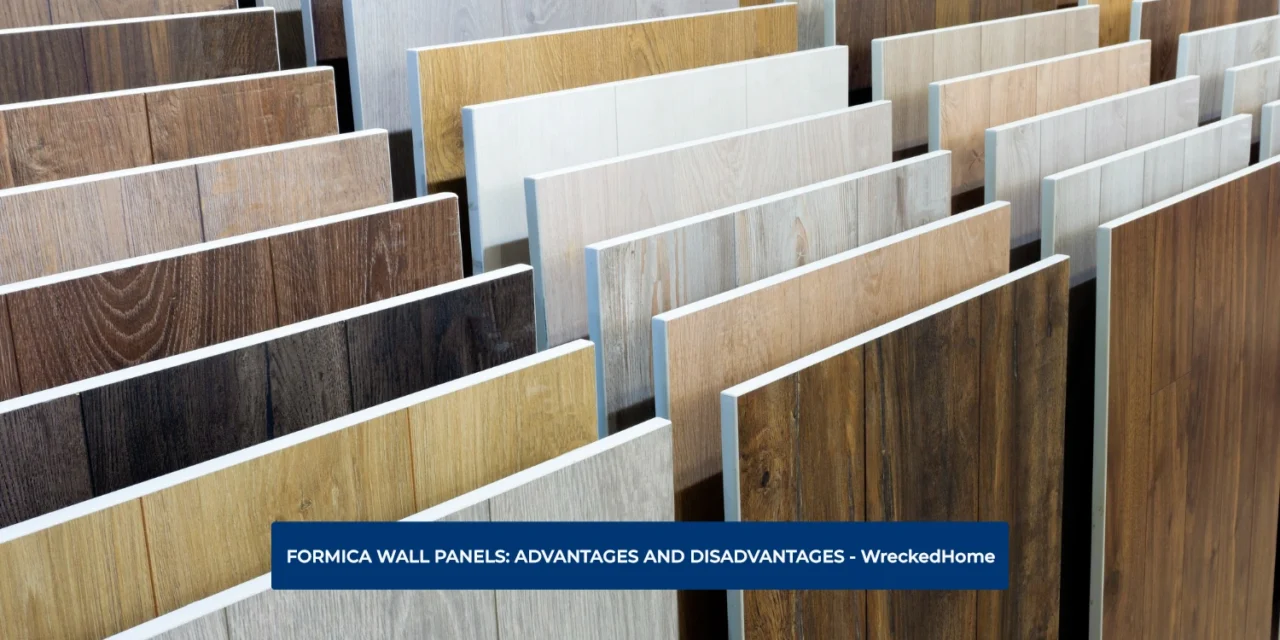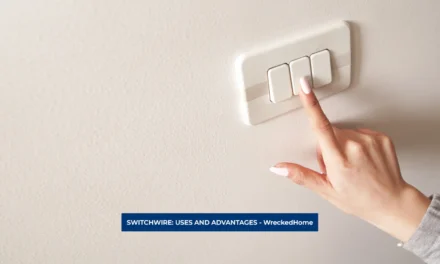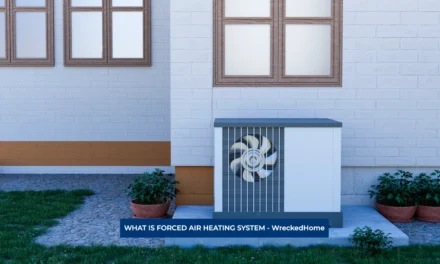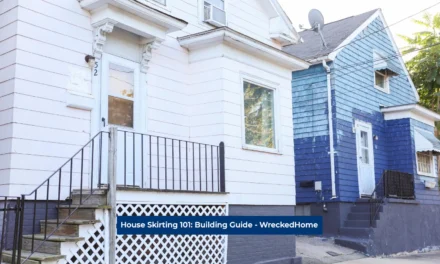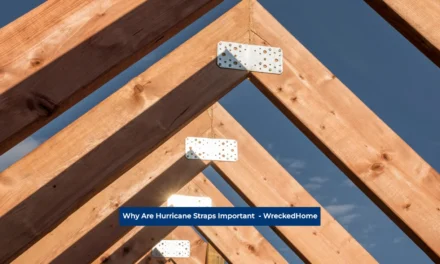From interior design to architectural innovation, wall panels always captivate the attention of designers, homeowners, and builders alike. Wall panels are available in a variety of materials like Marlite wall panels but the one gaining popularity nowadays is Formica wall panels.
Though Formica wall panels are design solutions, they generally have some positive and negative points. To know the advantages and disadvantages of Formica wall panels, read our guide to make a wise decision.
What are Formica Wall Panels
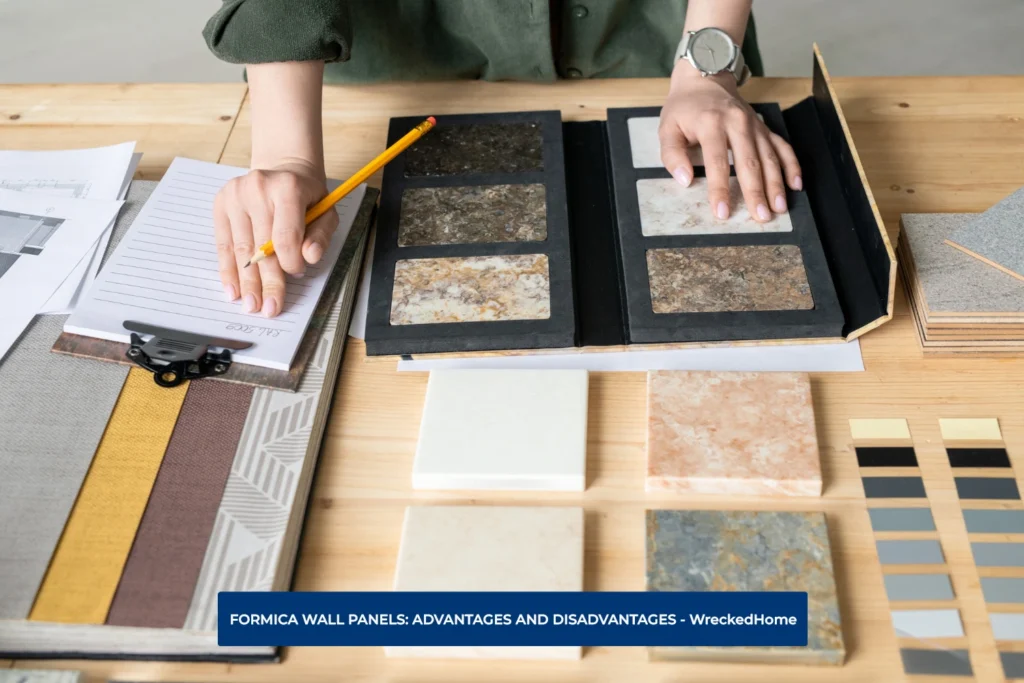
Formica wall panels are decorative wall coverings and are of high-pressure laminate (HPL). This material prevents scratches and is heat resistant. They are used in both commercial and residential settings.
History of Formica Wall Panels
Formica wall panels were first developed as durable and affordable alternatives to ceramic tile and other wall coverings. First developed in the early 1950s, they quickly became popular because of some features like easy installation, maintenance, and variety.
At first, these wall panels were available in solid colors and wood grain patterns. With time, colors, patterns, and finishes, they have increased with technological advancements.
These wall panels are also used in the world’s most iconic buildings, including the Empire State Building, the United Nations Headquarters, and the Sydney Opera House. These panels are generally used in commercial applications, like restaurants hotels hospitals and schools. Formica wall panels have a long and rich history, and they are popular now in every field.
Types of Formica Wall Panels
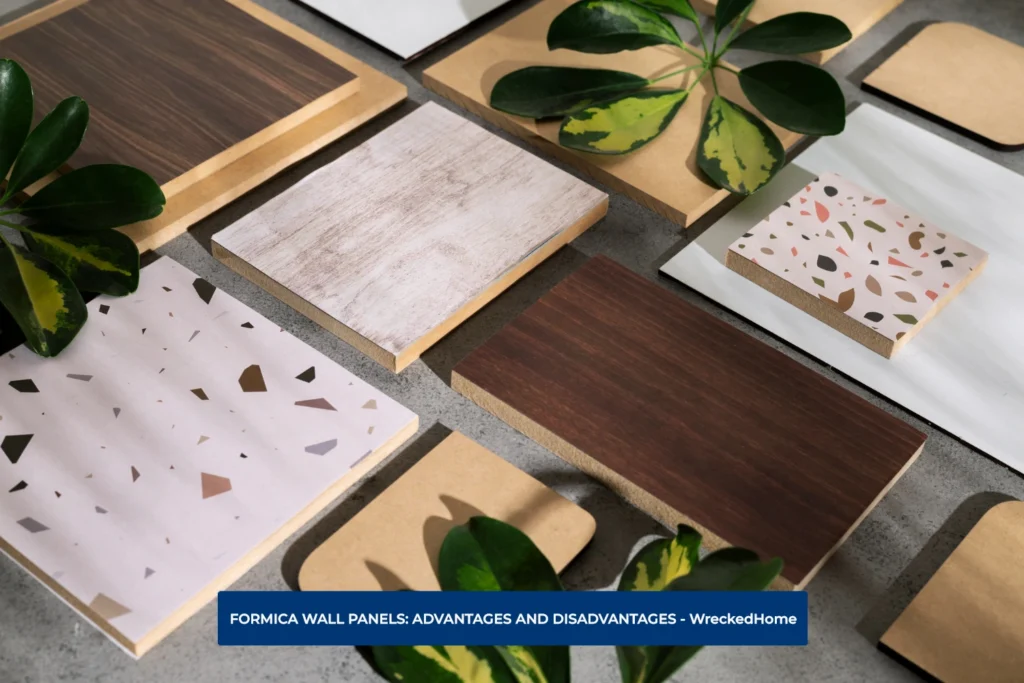
There are two main types of Formica wall panels. Let’s discuss these two formica wall panel types in detail:
Decorative Hardstop Panels:
These decorative HardStop panels have a fiberglass core that makes them highly durable and impact-resistant. These panels are available in various colors and patterns such as wood grains, stone finishes, and solid colors. Decorative HardStop panels are ideal for commercial and high-traffic applications because they are also class-A fire-rated.
Laminate Wall Panels:
Laminate wall panels have a paper core that makes them less durable than decorative HardStop panels. On the other hand, Laminate wall panels are more affordable than decorative panels. These panels are available in wide range of colors and patterns such as wood grains, stone finishes, solid colors, and abstract designs.
Formica wall panel classification based on finish
According to their finish, Formica wall panels are classified into different types that are as follows:
Matte Finish:
The matte finish has a flat non-reflective surface and this finish becomes a good choice for creating a relaxed and understated look.
Gloss Finish:
The gloss finish reflective surface gives them a sleek, glossy, and modern look. These panels’ finishes are easier to clean than matte finish panels.
Texture Finish:
The texture finish panel surface looks like the texture of natural material such as stone or wood. The texture finish becomes the best choice for adding depth and interest to a room’s decor.
Note:
It is important to consider the specific needs of application before choosing Formica wall panels. For high-traffic areas, choose highly durable and impact-resistant panel. A decorative HardStop panel is best choice in above case.
Laminate wall panels are a good choice for those looking for budget-friendly options. Make sure to choose the finish that best suits your project needs. Also read our guide about Stucco Texture and Orange Peel Wall Texture.
Common Uses of Formica Wall Panels
Formica wall panels are versatile and durable and have been used in variety of fields, a few of them are discussed below.
- Kitchen: Formica wall panels are easy to clean (with a Microfiber Towel) and resistant to stains, heat, and moisture, and can be matched to the other finishes in the kitchen, like the cabinets and counter tops. Thus they are great options for kitchens.
- Bathrooms: Formica wall panels are resistant to moisture and mold, thus a good choice for bathrooms. You can match them with other finishes like the tub, shower, and toilet.
- Laundry rooms: Laundry rooms typically need something that can withstand heavy use, like Formica wall panels which are also easy to clean and resistant to moisture and stains.
- Mudrooms: Formica wall panels’ easy-to-clean and resistant to dirt, mud, and water nature make them a good choice for mudrooms. Moreover, they can also help to protect the walls from damage.
- Offices: Offices need different kinds of looks like professional and creative and Formica wall panels offer such uniqueness.
- Schools: schools are high-traffic areas, and need something like Formica wall panels which can withstand heavy use, are durable, and are easy to clean.
- Hospitals: In hospitals, Formica wall panels offer resistance to bacteria and create a sterile and sanitary environment.
- Hotels & Restaurants: Formica wall panels are great choice for hotels and restaurants because they are durable, easy to clean, resistant to stains and heat and available in a variety of different colors and patterns. They create different looks from stylish to inviting and from casual to upscale.
- Retail stores: By creating an appealing and inviting shopping environment, Formica wall panels work best to install in retail stores.
- Gyms: In addition to being durable, and being resistant to sweat and moisture, Formica wall panels also help to create a motivating and energizing workout environment.
- Spas: Spas need panels that are durable, and resistant to moisture and mold. Formica wall panels work best as they can also help to create a relaxing and serene spa environment.
Advantages of Formica Wall Panels
These wall panels have become one of the outstanding, aesthetic, and versatile choices to enhance the functionality and decor of interior design. Why we chose Formica wall panels depends upon some obvious reasons and advantages that are as follows:
Durability:
These wall panels are known for their exceptional durability. These panels have high-quality materials and are resistant to worse conditions and wear and tear. Formica wall panels gives a long-lasting, strong, and healthy solution for interior wall surfaces.
Water Resistance:
These wall panels are designed in a way that they can easily withstand moisture. This particular feature makes these panels an ideal choice for areas with high humidity or occasional water exposure. The water-resistant feature maintains panel integrity and helps avoid damage caused by water-related issues.
Stain Resistance:
These wall panels have stain-resistant properties that make these panels repel common stains. These panels are also suitable for spaces with regular splashes and spills.
Heat Resistance:
Thee wall panels have the capacity to handle heat with ease. So, you can use these panels in kitchens and other heat exposure areas as a reliable source. Heat resistance panels maintain structural integrity and appearance specifically in high-temperature environments.
Fire Resistance:
Safety is crucial and Formica wall panels provide safety with ease because of its fire resistant properties. The panels add an extra layer of protection to interior spaces that make these panels a perfect choice for both commercial and residential areas.
Low Maintenance:
The smooth and non-porous surface of Formica panel makes them easy to clean which reduce the time and effort to keep up. So, these panels are known for their low-maintenance properties. The low-maintenance properties contribute to the long-term cost-effectiveness of Formica panels.
Easy to Clean:
Formica walls smooth surface allows for quick and simple cleaning that makes it convenient to maintain a fresh and polished look. The easy-to-clean feature makes Formica panels perfect for high-traffic areas and spots where cleanliness is a priority.
Affordability:
These wall panels is a budget-friendly option without compromising on quality. There is no need to compromise on quality and you will get a stylish and durable interior. Due to these panels’ budget-friendly quality, it is highly recommended.
Wide Variety of Colors and Styles:
These wall panels are available with various design options including color, style, and pattern. Whether it be a classic tone or a bold pattern, every design gets appreciation. You will have creative freedom to design your space according to your choice and style.
Disadvantages of Formica Wall Panels
With a wide range of advantages, like any other material, these wall panels also have some disadvantages. So, consider these disadvantages before making any final decision. Understand these drawbacks and make more precise choices in interior design and construction projects.
Not as High-End as Other Materials:
Formica wall panels are deprived of the luxurious aesthetic appeal of high-end materials such as natural stone or hardwood. Formica may not be a suitable choice for projects that require a premium, upscale finish.
Difficult to Repair:
It is a challenging task to repair defective Formica wall panels. The Formica repairing process involves noticeable alterations that affect the overall appearance of the surface. So, these panels are not a good choice when it comes to repairing process.
Can Be Difficult to Install:
These wall panels are difficult to install and that’s why installation of these panels requires expertise in the field. Improper installation results in visible seams, misalignment, or other issues that compromise surface integrity. It is recommended to choose a skilled professional to install Formica wall panel to avoid any further damage. Find A Pro Near You Here!
Not as Breathable as Other Materials:
Formica panels are not as breathable as some natural materials. This Lack of breathe-ability disadvantage can be a concern when moisture control is crucial. These panels contribute to trapped moisture and potential issues such as warping or degradation over time.
Can Be Susceptible to Mold and Mildew Growth:
Formica wall panels may be susceptible to mold and mildew growth in areas with high humidity or moisture. Proper maintenance and ventilation lower the risk of mold and mildew growth. Choose other alternative materials that are resistant to mold and mildew in such conditions.
Alternatives to Formica Wall Panels
Formica wall panels are a famous wall covering choice of many. Some people also use Formica alternatives which create a similar look and feel. Some of the common alternatives are as follows:
Natural stone:
Natural stone such as marble, granite, and limestone, are a durable and luxurious wall covering option. It can be the best alternative to Formica wall panels. Natural stone is available in the great range of colors and patterns and is used to create different looks from classic to modern. However, natural stone can be expensive and difficult to install.
Ceramic tile:
Ceramic tiles are the second alternative that is a durable and versatile wall covering option. Ceramic tiles are available in various colors, finishes, and patterns that can be used to make different looks from classic to modern. Ceramic tile is relatively affordable and an easy-to-install option than Formica wall panels.
Glass:
If you are looking for modern and stylish wall-covering option, glass can be a good choice. Glass wall panels are used to create variety of appealing looks, from clean and smooth to dramatic and eye-catching. There is only one drawback and that is these panels are fragile and difficult to install.
Metal:
The metal wall panel is another alternative that is durable and industrial chic wall covering option. These wall panels are available in variety of finishes such as brushed stainless steel, copper, and weathered brass. One of its disadvantages is expense and installation difficulty.
Wood:
For those who are looking for a classic and versatile wall-covering option, wood wall is best alternative. Create variety of designs and looks with wood wall paneling that is available in variety of wood species, finishes, and styles. Wood panel is expensive and difficult to maintain.
Choosing best alternative to Formica wall panel specifically depends upon your needs and budget. Those who are looking for durable and affordable option can choose ceramic tile. For stylish and modern wall covering options, glass and metal wall panels are a good choice. The wood wall panel is a good choice for classic and versatile wall-covering option.
Conclusion
Formica wall panels are most people’s choice among many wall panel options. These panels are easy to install, and maintain, and look fabulous on walls. The Formica material gives an exciting look to furniture, kitchen counter tops, and bathroom walls.
Frequently Asked Questions
Can you use Formica for bathroom walls?
People mostly use Formica wall panels in bathrooms. As these panels are of durable and water-resistant material they are easy to clean. Don’t forget to use a high-quality sealant at seams and edges otherwise, water penetrates behind Formica and causes delamination.
How much does Formica HardStop cost?
Formica HardStop is more expensive than other wall panel options like tile or FRP, it costs around $10 per square foot. Irrespective of high price, Formica HardStop is durable and easier to maintain.
Does Formica have fiberglass in it?
No, all Formica does not have fiberglass in it, instead it is a combination of paper, resin, and pigments. It is a good option to install for those who are allergic to fiberglass. Formica HPL, Formica Laminate Flooring, and Formica Solid Surfacing have no fiberglass, however, Formica HardStop Decorative Protection Panels have treated fiberglass core.

